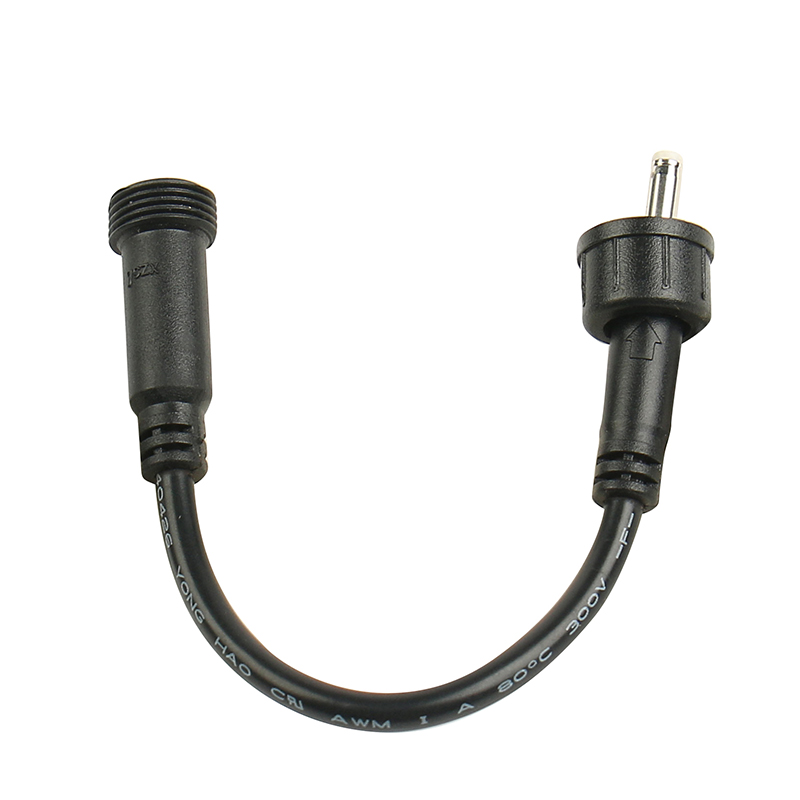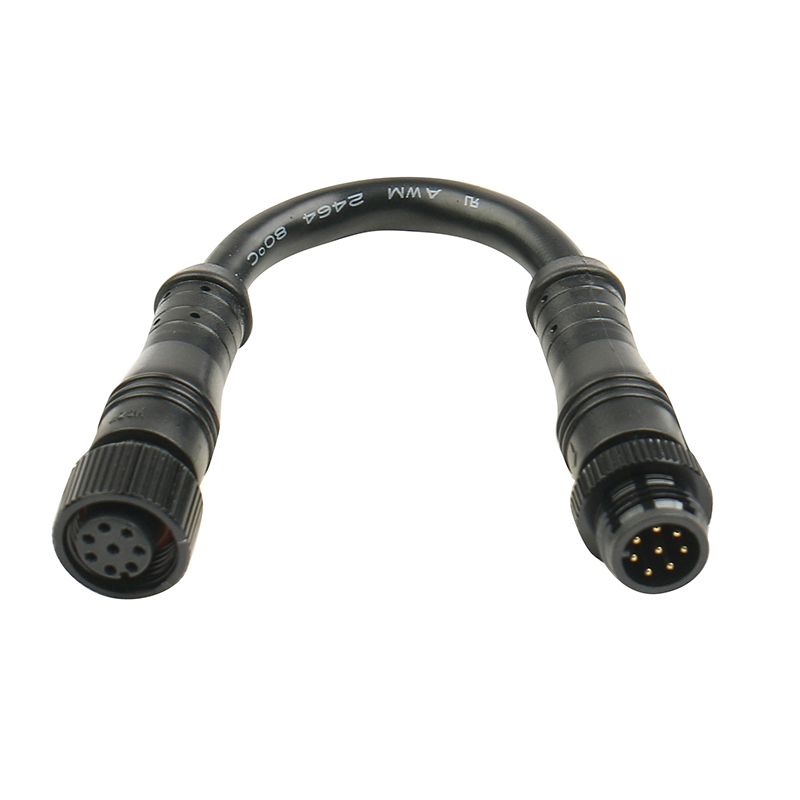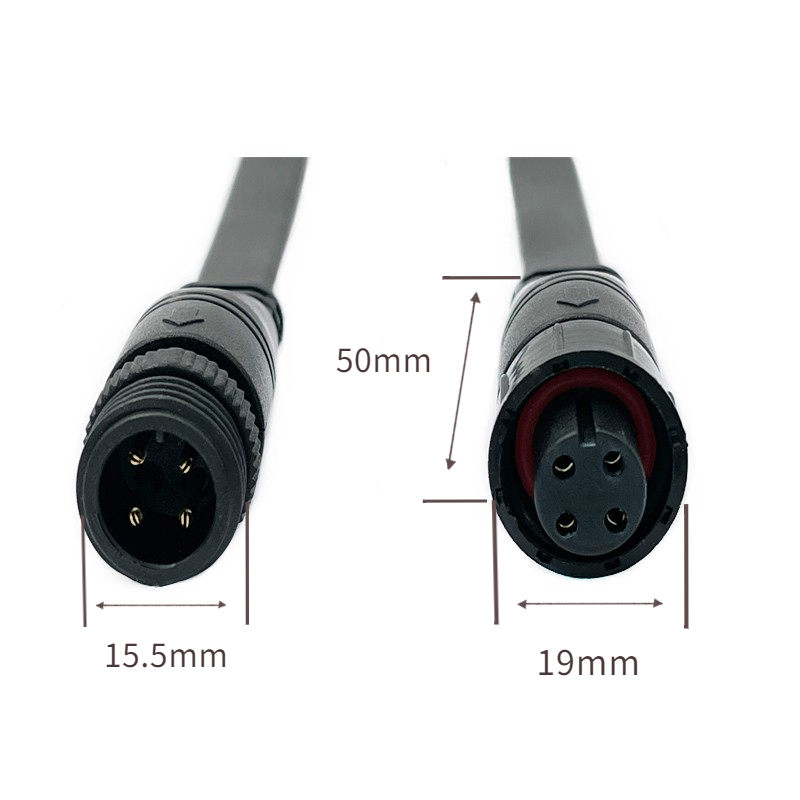News


News

What are the applications of waterproof I/O connectors in special environments?
Release time:2024-11-22
viewed:409
In the field of modern industry and electronics, waterproof I/O connectors play a crucial role as the interface between electronic devices and the external environment. Especially in extreme climates and corrosive environments, the performance of waterproof I/O connectors directly affects the stable operation and life of the equipment. Do you know what special requirements are there for the performance of the waterproof I/O connector in extreme climates (such as high temperature, low temperature, strong winds, heavy rain, etc.) and corrosive environments (such as salt spray, chemical gases, etc.)?

Challenges and solutions for high temperature environments
In high temperature environments, waterproof I/O connectors face challenges such as thermal expansion of materials, reduced electrical performance, and aging of sealing materials. High temperatures can cause thermal expansion of the material inside the connector, which in turn affects the tightness of the contact and the stability of the electrical connection. In addition, high temperature will accelerate the aging of the sealing material and reduce its waterproof performance.
To address these issues, manufacturers typically adopt the following measures:
Use high temperature resistant materials: such as metal alloys and plastic materials that can remain stable at high temperatures to ensure the structural integrity and electrical performance of connectors at high temperatures.
Optimized sealing design: The use of high-temperature sealing materials and structures, such as silicone sealing rings, to improve the waterproof performance of the connector.
Enhanced heat dissipation design: By adding heat dissipation holes and using heat sinks, you can improve the heat dissipation capacity of the connector and reduce the impact of temperature on the connector performance.
Challenges and solutions in low temperature environments
At low temperatures, the main challenges facing waterproof I/O connectors include material embrittlement, reduced electrical performance, and weakened sealing performance. Low temperatures can cause embrittlement of the material inside the connector, increasing the risk of breakage while reducing the stability and water resistance of the electrical connection.
To solve these problems, manufacturers usually take the following measures:
Selection of low-temperature resistant materials: Choose materials that can maintain flexibility and strength at low temperatures, such as rubber seals that can remain elastic at low temperatures.
Strengthen the structural strength: By increasing the structural strength of the connector, such as using a thicker metal shell, to resist material embrittleness at low temperatures.
Optimized sealing structure: Multi-layer sealing structure is used to improve the waterproof performance of the connector at low temperatures.
Challenges and solutions in strong wind and rainstorm environments
In strong winds and heavy rain environments, waterproof I/O connectors need to withstand the mechanical impact of strong winds and water intrusion caused by heavy rains. Strong winds may lead to connector loosening and damage, while heavy rain may directly damage the waterproof performance of the connector.
To solve these problems, manufacturers usually take the following measures:
Increase the fastening force: Increase the stability of the connector in strong winds by increasing the number and size of the fastening screws, or by using a locking mechanism.
Strengthen the sealing performance: The use of high-performance sealing materials and structures, such as the use of waterproof coatings and waterproof gaskets, to improve the waterproof performance of the connector under heavy rain.
Increase the protection level: Increase the IP protection level of the connector to cope with the harsher outdoor environment.

Challenges and solutions in salt spray environment
In salt spray environments, waterproof I/O connectors face a serious risk of corrosion. The salt and moisture in the salt spray will accelerate the corrosion process of the connector, resulting in reduced electrical performance, sealing performance failure and other problems.
To solve these problems, manufacturers usually take the following measures:
Selection of corrosion resistant materials: such as the use of stainless steel, titanium alloy and other excellent corrosion resistance of metal materials, as well as corrosion resistant plastic materials.
Strengthen the surface treatment: special treatment of the connector surface, such as galvanized, nickel plating, etc., to improve its corrosion resistance.
Using anti-corrosion coating: Coating the surface of the connector with anti-corrosion coating, such as epoxy resin, to further improve its corrosion resistance.
Challenges and solutions in chemical gas environments
In chemical gas environments, waterproof I/O connectors need to withstand corrosion and erosion of chemical gases. These chemical gases may include acidic gases, alkaline gases, organic solvents, etc., which can cause serious damage to the material and structure of the connector.
To solve these problems, manufacturers usually take the following measures:
Selection of chemical corrosion resistant materials: such as the use of special alloy materials, ceramic materials, etc., to improve the connector's corrosion resistance to chemical gases.
Enhanced seal design: The use of high-performance sealing materials and structures to prevent chemical gas intrusion into the interior of the connector.
Increase protective measures: Add a protective cover or protective layer outside the connector to reduce the direct erosion of chemical gases on the connector.

In a special environment, the selection and testing of waterproof I/O connectors is very important. The correct selection can ensure that the connector can still maintain good performance in harsh environments, and rigorous testing can verify the reliability and durability of the connector.
1. Selection suggestions
Consider the use environment: Select the appropriate connector type and material according to the specific use environment (such as temperature, humidity, corrosive gases, etc.).
Consider electrical performance: Select the appropriate connector specifications and parameters according to the electrical requirements of the device (such as voltage, current, frequency, etc.).
Consider installation and maintenance: Choose a connector type that is easy to install and maintain to reduce later operation and maintenance costs.
2. Test method
Environmental simulation test: By simulating the temperature, humidity, salt spray, chemical gas and other conditions in a special environment, the performance of the connector is tested.
Electrical performance test: Test the connector's contact resistance, insulation resistance, dielectric strength and other electrical performance parameters to ensure its electrical stability in harsh environments.
Mechanical performance test: Test the connector's inserting and pulling force, tensile strength, torque resistance and other mechanical performance parameters to verify its structural strength and stability in special environments.
The application of waterproof I/O connectors in special environments faces many challenges, but by choosing appropriate materials, optimizing structural design, strengthening surface treatment and other measures, it can significantly improve its performance in extreme climates and corrosive environments. At the same time, correct selection and rigorous testing are also key to ensuring stable operation of connectors in harsh environments.